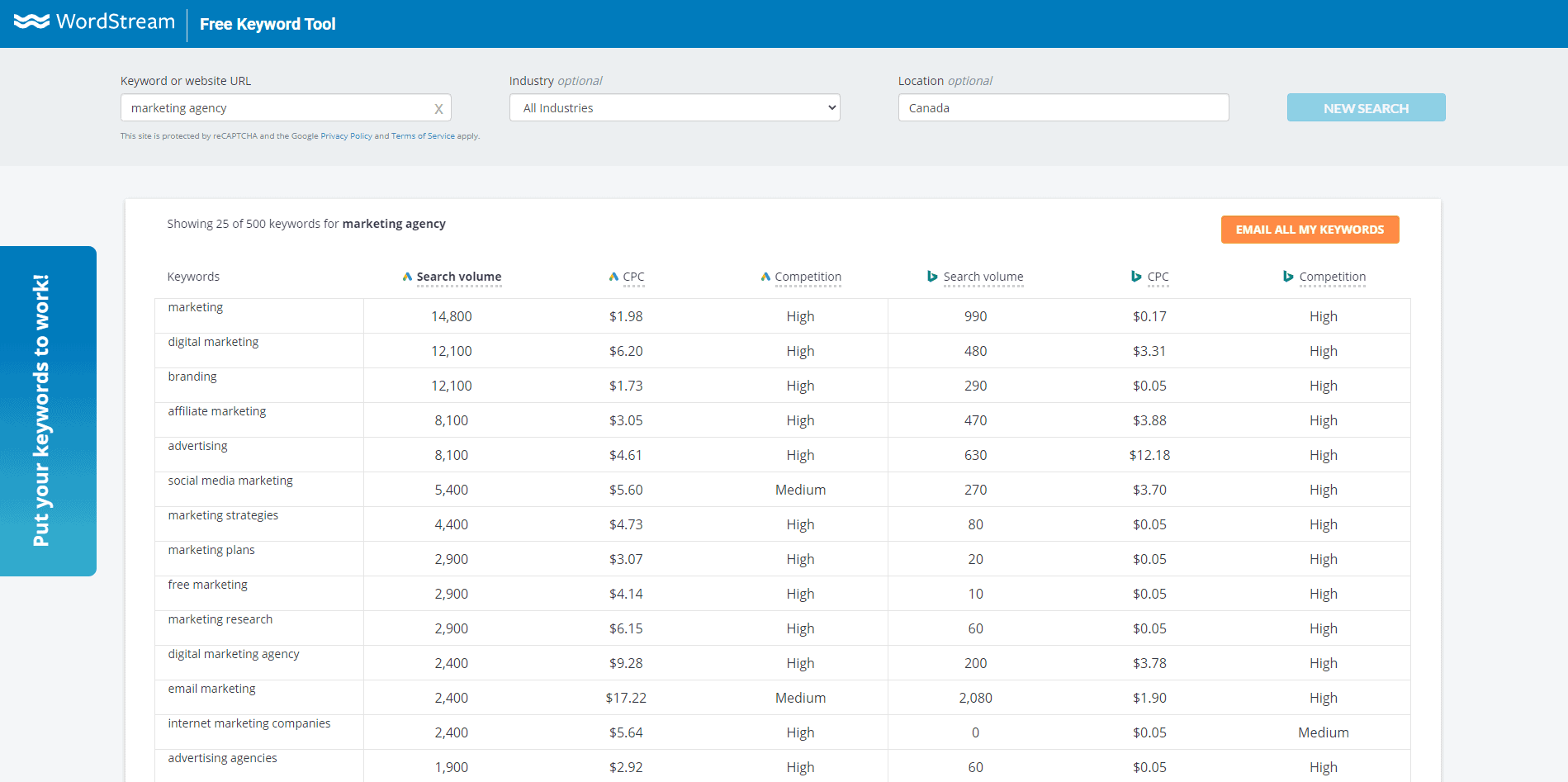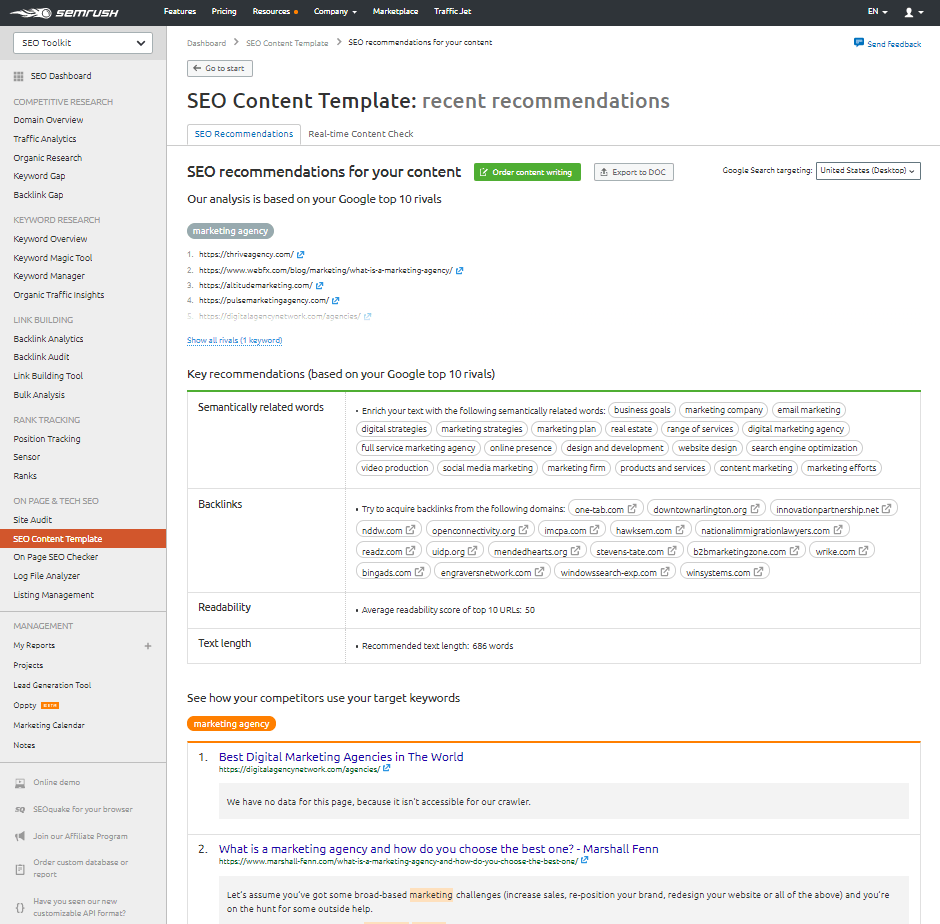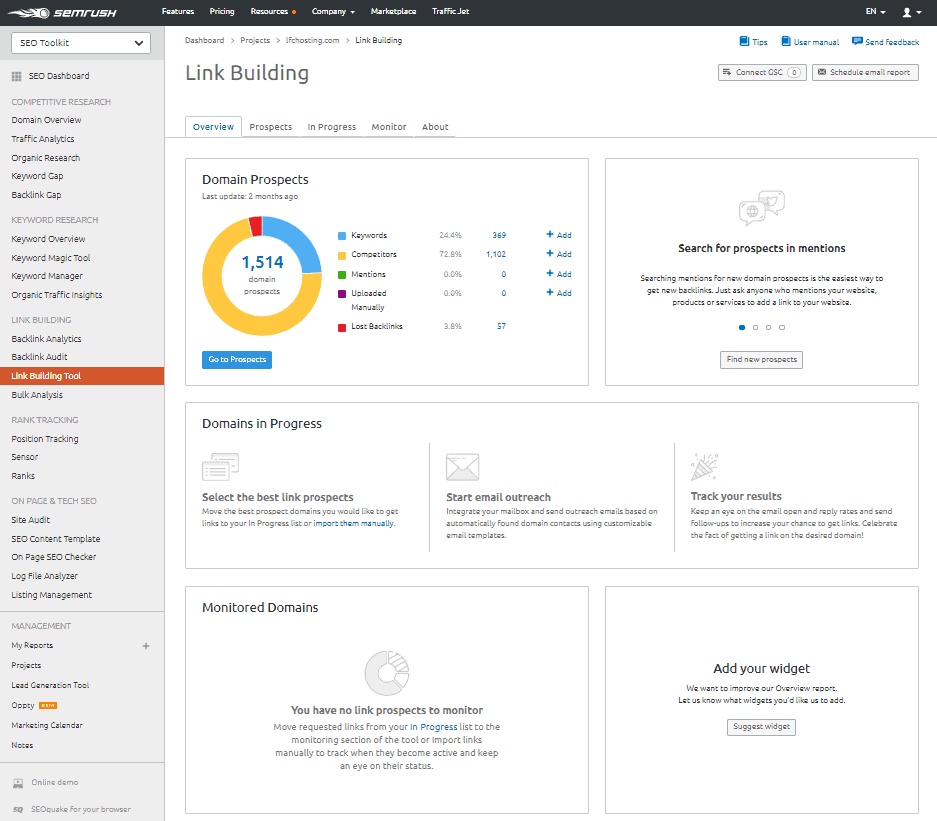An SEO content strategy acts as a guiding framework for content planning and the overall execution of your content marketing tactics and initiatives.
The purpose of a content strategy is to guide the creation of content that satisfies business objectives. An effective SEO content strategy helps define the objectives of your content marketing campaign, then meet those objectives by coordinating market research, content planning, and content promotion into an optimized workflow.
In this guide, we highlight the 10 components of a great SEO content strategy. We’ll show you exactly how to start from scratch and build an actionable strategy for achieving your content marketing campaign objectives.
[optin-inline id=’fwogyneozfidk0avstsf’]
10 Components of a Great SEO Content Strategy
Goal Setting
Digital marketers should formulate clear and measurable goals at the outset of a content marketing campaign. Campaign goals should reflect the needs of the business. They should account for the anticipated length of the campaign and target specific outcomes.
Instead of “I want to increase lead generation”, we’d recommend a goal like “I want to increase lead generation by 30% in the next three months”. This type of goal setting introduces a specific target and a deadline that motivates action.
Some of the most common goals for content marketing include:
- Increase total page views
- Increase organic traffic
- Increase average pages per session
- Increase average session duration
- Increase lead generation
- Create brand awareness
- Increase domain authority or trust score
- Increase revenue/sales
All of these metrics can be measured using Google Analytics, making it easy for digital marketers to monitor their performance over time. At the outset of a new marketing campaign, we like to choose one metric to act as a key performance indicator (KPI) for campaign success. This practice helps us stay ultra-focused on what’s important for achieving success.

Image: Digital marketers can track SEO metrics and KPIs using Google Analytics to measure campaign success.
Audience & Persona Development
Planning out your SEO content strategy? It’s critical that you know your audience. Understanding who buys your products or services online and who will be reading your content will help you target your efforts more effectively and maximize your appeal for the prospects that matter the most.
Audience personas are fictionalized representations of the people who will be reading your content. The development of audience personas is a tool that content marketers use to better their understanding of marketing audiences and prospective customers. Audience personas include information such as:
- Demographic information (age, marital status, etc.)
- Financial information such as household income
- Job role, title, and salary
- Online behaviors
- Brand affinities
- Purchasing behaviors
- Motivations and desires
- Concerns and pain points
- Content preferences
If you’re an in-house marketer, you should already have access to buyer personas for products that can serve as a starting point for developing audience personas.
Brand Positioning
Brand positioning is all about understanding how your brand relates to other brands in the marketplace.
Customers today are sophisticated; before purchasing your product or service, they research your competitors and make comparisons based on their own values: quality, price, trust, etc.
By understanding where you stand out and how you provide the most value, you can craft more targeted marketing messages that differentiate your brand from the competition. Integrating these messages into your content marketing efforts can have a major impact on customer acquisition.
Again, in-house marketers should already have an understanding of how their brand is positioned in the marketplace and what type of promotional messaging is appropriate for inclusion in an SEO content strategy.
Topic Ideation
With a basic understanding of your target audience and the way your brand is positioned in the marketplace, you can start coming up with topics that you may want to write about. Try to envision content pieces that:
- Appeal to the target audience and their known interests
- Help the target audience solve a common problem or make a decision
- Connect to your brand, products, and services in a positive way
- Reflect your campaign goals
Don’t focus on keywords just yet – focus on coming up with ideas for content that would benefit the target audience. Great content starts with an idea to solve a problem, communicate an idea, or organize information in a new way. Feel free to brainstorm as much as you would like and come up with a list of 20-100 article topics that might interest your target audience.
Keyword Discovery + Research
According to SEO best practices, each page of your website that you wish to rank in the search engine results pages should be optimized for one specific keyword. The purpose of keyword research and keyword discovery is to identify keywords and search queries that you wish to target with your content marketing efforts. Digital marketers should target keywords that:
- Receive enough search volume to result in a measurable impact on organic traffic
- Are not, relatively speaking, too competitive or difficult to rank for
- Are relevant to the business, its brand, products, services, and offerings
Each piece of content should be optimized for a single keyword. Digital marketers should choose a mix of long-tail keywords (3-5 words) and fat head keywords (1-2 words) to target. Marketers should begin to match their chosen keywords with topic ideas and write new SEO-optimized titles that contain the focus keyword.

Image: WordStream’s free Keyword Tool makes it easy for digital marketers to discover keywords, analyze keyword metrics and choose the best keywords to target across leading search engines.
Search Intent Analysis
In 2020, Google relies equally on keywords and search intent to understand what searchers are looking for and connect them with the most relevant content that satisfies their needs.
Google has identified at least four search intentions that characterize the majority of searches:
- Transactional Intent – The searcher is looking to purchase a product or service.
- Commercial Investigation – The searcher is looking for reviews or comparisons of a brand, product, or service.
- Navigational Intent – The searcher is trying to navigate to a specific page.
- Informational Intent – The searcher is looking for information about a specific topic, product, or service.
Consider these four search queries:
- “buy running shoes“
- “running shoes vs sneakers
- “runningshoes.com“
- “what are running shoes?”
All of these queries use the keyword “running shoes”, but each one has a different intention behind it. Content in 2020 needs to be optimized for both keywords and the search intent of the user. A digital marketer could target each of these search intentions with separate content pieces.
Funnel Mapping
Funnel mapping is a little process that we created to help ensure that we’re supporting our audiences through each stage of the purchasing process. This relates back to search intent and the importance of optimizing your content for both keywords and different search intentions.
In a typical sales funnel, the steps are usually analogous to awareness, interest, decision, action:
- Awareness: The buyer becomes aware of the product.
- Interest: The buyer seeks out information about the product or service, may start visiting brand websites and reading content.
- Decision: The buyer looks at brand reviews or comparisons to determine which brand or vendor meets their needs.
- Action: The buyer makes the purchase.
As you may have noticed, this basic sales funnel matches up well with Google’s four search intentions!
An effective SEO content strategy supports buyers with relevant content at every stage of the purchasing journey. It includes content pieces for the top of the funnel (informational content), the middle of the funnel (reviews, comparisons), and bottom of the funnel (highlighting specific benefits with a more sales-y tone).
Content Benchmarking
At this point, you are almost ready to begin executing your content strategy.
You should have a list of topics. Each topic should have a working title. The working title should include the focus keyword. The keyword should be relevant and descriptive of the topic of the piece. The piece should also target one of the search intents that we have defined above.
To further develop specifications for each content piece, we do a process called content benchmarking. Here’s what that entails:
- Type the focus keyword for your content piece into a search engine
- Open the top ten, top twenty, or top thirty results
- Analyze the best-performing results across the most important metrics
- Create content specifications to out-perform top-ranking pieces

Image: The SEO Content Template tool on SEMrush can help streamline the content benchmarking process for digital marketers.
Metrics for content benchmarking include total content length, keyword density, readability score, overall comprehensiveness, and the number of subheadings. Creating “Best of its Kind” content is one of the best ways to increase your odds of content marketing success.
Building an Editorial Calendar
At this point, your SEO content strategy is essentially complete.
You should have a list of content pieces that you will create, which keywords they will target, which point in the sales funnel they will support, which search intent they should map to, and exact specifications for each piece (benchmarked against the competition).
The next step is to create an editorial calendar and coordinate the production, editing, revision, and publication of content pieces on your website. You can schedule content production in any way you see fit, depending on your total capacity and production workflows. Some marketing teams crank out new content every day, while others succeed publishing just 2-4 pieces per month.
Content Promotion Strategy
As a final step in developing your SEO content strategy, consider how you will promote your content once it is published. Will you share it on social media? Will you start a formal link building campaign with defined objectives? Will you conduct email outreach and share it with other websites in your niche? Will you share your content directly with potential customers?
All of these questions can impact how you choose to execute your content strategy, so it’s important to strategize for effective content promotion at the outset.

Image: SEO tools like this Link Building tool by SEMrush can help digital marketers coordinate and optimize content promotion and email outreach campaigns.
Summary
In this article, we covered the 10 components of a great SEO content strategy. Digital marketers who incorporate all of these elements into their strategy development are more likely to see increased organic traffic, better search rankings, more lead generation, and increased downstream revenue as a result of their content marketing efforts.
Want to learn more about SEO content strategy?
Visit the Directive Institute and check out our step-by-step guide on how to build SEO strategy.
-
 CEO
Garrett Mehrguth
CEO
Garrett Mehrguth
Did you enjoy this article?
Share it with someone!
